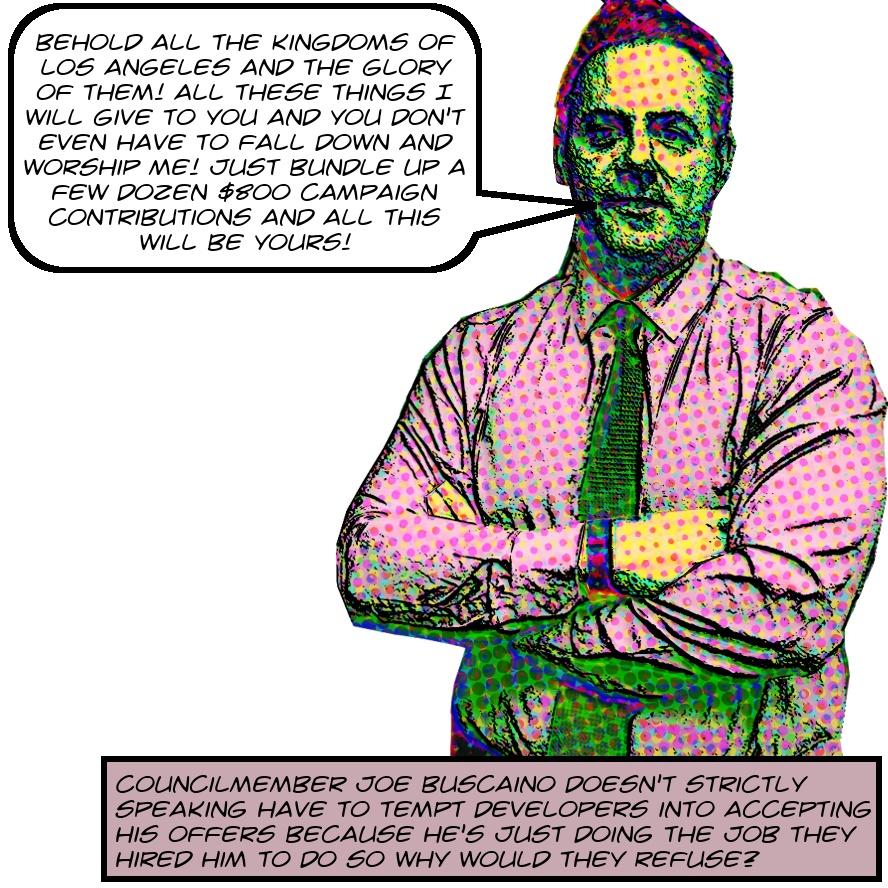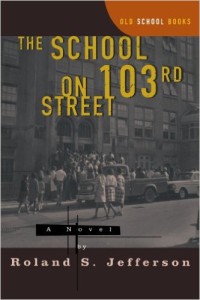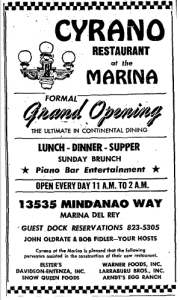 In 2017 the Federal Government created the latest entry in a long series of programs leveraging various combinations of tax cuts and economic incentives to enrich zillionaires at the expense of poor urban communities of color. The current incarnation is known as an Opportunity Zone. Opportunity Zones, like their predecessors, use powerful economic and policy tools to promote displacement, to incentivize gentrification, and to siphon money from the treasury to zillionaire coffers. The heroic economic justice activists in SAJE have done a great deal of deep and fundamental research into this program, including its likely effects on Los Angeles, published in a blockbuster report called Displacement Zones.
In 2017 the Federal Government created the latest entry in a long series of programs leveraging various combinations of tax cuts and economic incentives to enrich zillionaires at the expense of poor urban communities of color. The current incarnation is known as an Opportunity Zone. Opportunity Zones, like their predecessors, use powerful economic and policy tools to promote displacement, to incentivize gentrification, and to siphon money from the treasury to zillionaire coffers. The heroic economic justice activists in SAJE have done a great deal of deep and fundamental research into this program, including its likely effects on Los Angeles, published in a blockbuster report called Displacement Zones.
The Los Angeles muncipal government, which can fruitfully be conceptualized as an incredibly efficient alchemical process for transformatively combining human misery and real estate into zillionaire gold,1 is, as you’d expect, right on top of this newly created opportunity for grift. And, also as you’d expect, they’ve hidden many parts of the process from the public, not by carrying them out in the proverbial but by now outmoded smoke-filled rooms, but by obscuring them beneath multiple layers of semantically empty words, distributing pieces of the process across multiple council files, mostly supplementary, in the effectively-unsearchable-by-design Council File Management System, and so on.2
But with careful attention to the City’s various announcements and close reading of motions it’s occasionally possible to become aware of some of their moves. This is how I learned that in June 2019 Joe Buscaino introduced a couple of motions with the phrase “City Economic Development / Asset Management Framework Review” in their titles, each along with a specific address. These are Council File 12-1549-S14, which is about 500 S. Mesa Street and Council File 12-1549-S15, which is about 1845 E. 103rd Street. Both motions note that the properties are located in Opportunity Zones. The motions instruct various City departments to evaluate the properties “for economic development purposes” according to some set of criteria called “the Asset Management Framework” and then report back to Council on their findings.
The report-backs hit the Council Files a few weeks ago (500 S. Mesa Street and 1845 E. 103rd Street). Both recommend, as they seem to have been intended to do, that the City issue a request for proposals to use the properties for economic development, potentially through private development. The fact that the two reports are identically worded except for a few specific details about the properties suggests that not much care was taken in their creation. This supports the view that the outcomes of the evaluations were predetermined. The fact that the criteria for what counts as economic development are so vague supports the view that the ultimate point is to sell these valuable parcels off to some developer with a superficially plausible story about tax benefits or whatever.
And the fact that the City is going to sell the properties to private developers3 supports the view that the goal is grift rather than using City-owned resources to help residents of the City. It’s not like the City of Los Angeles itself can’t develop its properties for commercial use, which would support economic development just as much as if a private developer owned the land, or more because more of the money would go to the City. Just for instance, the City owns plenty of parking garages, many of which have retail space at street level. The City offers these for lease to commercial tenants, a proposition which must be of more value to the City than if a private developer is involved in any capacity and taking out profits.
Continue reading Joe Buscaino Moves To Sell Off Two City-Owned Parcels In CD15 To Private Developers For Some Nonsensical Purpose He’s Calling Economic Development – And They’re In Freaking Opportunity Zones So Not Only Is The Grift Turned Up To Eleven But The Sale Will Likely Support Gentrification And Displacement – And Half The Money From Such Sales Goes Straight Into The Councilmember’s Discretionary Slush Funds – Which Are Used Among Other Things For Projects To Boost Incumbent Popularity Before Elections – This Is What City Councilmembers Do With Our Public Land – Enrich Themselves And Their Zillionaire Cronies – Instead Of Building Social Housing On It – And A Loophole In Council’s Recent Motion To Require City Property To Be Used For Affordable Housing Is Finally Revealed!



